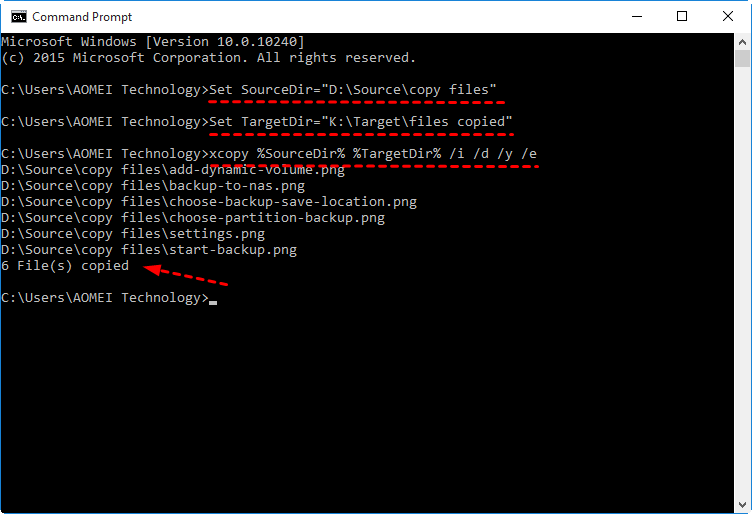
Source date/time is newer than the destination time, this is also a default action for Robocopy. The XCOPY /D option will copy only files whose In XCOPY the *.* filename-mask is required to match all files, in robocopy this is not needed as it is the default action. There is a lot of overlap between the two tools, Robocopy is generally better (more 'robust') at copying very large directories. In 2007 XCOPY was deprecated in favor of Robocopy, but it has since been given a reprieve and some new features added. This bug which has been around for over 10 years makes XCOPY a poor choice for any kind of backup script, use ROBOCOPY instead.
Copy new files only windows#
Insufficient Memory errorĪttempting to XCOPY a source file that has a pathname longer than the Windows maximum path length (254 characters) will result in a rather unhelpful 'Insufficient Memory' error, the operation will then halt. This requires the source and target file extensions to be the same length, typically 3 characters. In such cases XCOPY will prompt with a (locale specific) message like:Ĭ:\> xcopy C:\demo\foo.txt C:\demo\bar.txtĪdding a wildcard (*) to the end of the destination will suppress this prompt and default to copying as a file: When copying a single file with XCOPY, there is no option to indicate if the destination is a filename or a directory (with the filename defaulting to that of the source file). In many cases copying a single file is best done with the COPY command. When comparing Dates/Times the granularity (the finest increment of the timestamp) is 2 seconds for a FAT volume and 0.1 microsecond for an NTFS volume. XCOPY is particularly useful when copying files from CDROM to a hard drive,Īs it will automatically remove the read-only attribute. To always overwrite destination files use the COPYCMD environment variable: SET COPYCMD=/Y X Copy file audit settings (implies /O).ĭirectory contains a symbolic link XCOPY will create a matching directory in the destination on the first run (if one doesn’t already exist) but all subsequent XCOPY operations will then fail returning errorlevel 4. O Copy file Ownership and ACL information. That are formatted differently e.g NTFS and VFAT, or when archiving This can be necessary when copying between disks N If at all possible, use only a short filename (8.3) when creatingĪ destination file. XCOPY will otherwise reset read-only attributes. T /E will include empty folders and subfolders. T Create folder structure, but do not copy files.ĭo not include empty folders or subfolders. I If in doubt always assume the destination is a folderĮ.g. Reduces copy performance due to the extra logging. If the copy is interrupted part way through, COMPRESS Request SMB network compression during file transfer, if applicable. Y Prompt to confirm overwriting a file. Y Suppress prompt to confirm overwriting a file.Ĭan be preset in the COPYCMD env variable. W Prompt you to press a key before starting to copy.

V Verify that the new files are readable. Q Do not display file names while copying.

L List only, Display files that would be copied. G Allow the copying of encrypted files to a destination that does not support encryption.
Copy new files only full#
F Display full source and destination file names while copying.

C Continue copying even if an error occurs. B Copy the Symbolic link itself, not the target of the file. obj will excludeĪll files underneath the directory obj or all files with the When any of these match any part of the absolute path of a SOURCE file, thenįor example, specifying a string like \obj\ or. The files can each contain one or more full or partial pathnames to be excluded. E Copy folders and subfolders, including Empty folders. U Copy only files that already exist in destination. Source date/time is newer than the destination time. If no date is given, copy only files whose H Copy hidden and system files and folders (default=N)Ĭopy files changed on or after the specified date.
Copy new files only archive#
Turn off the archive attribute, use this option M Copy files with the archive attribute set and A Copy files with the archive attribute set (default=Y)

can be any combination of the following: Source : Pathname for the file(s) to be copied (accepts wildcards).ĭestination : Pathname for the new file(s). Similar to the COPY command except that it has additional switches to specifyīoth the source and destination in detail. Copy files and/or directory trees to another folder.


 0 kommentar(er)
0 kommentar(er)
